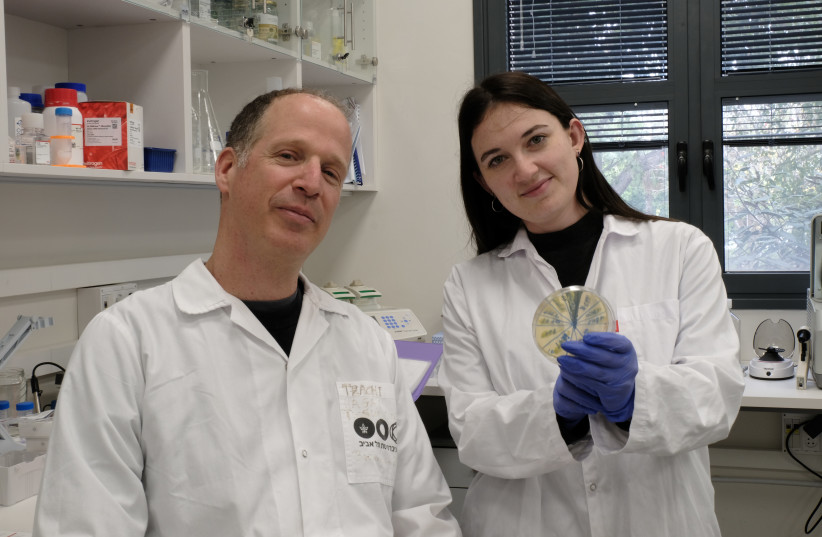In a new paper, researchers from the Shmunis School of Biomedicine and Cancer Research at Tel Aviv University (TAU) described how viruses use a decision-making process to adopt a bacterial immune system meant to combat viruses like themselves.
Doctoral student Polina Guler in Prof. Avigdor Eldar’s lab and her colleagues have deciphered a novel, complex decision-making process that helps viruses choose whether to become harmful or stay friendly to their bacterial host. The essay, which was published in the prestigious journal Nature Microbiology under the abstruse title, “Arbitrium communication controls phage lysogeny through non-lethal modulation of a host toxin-antitoxin defense system,” described how viruses co-opt a bacterial immune system, intended to combat viruses like themselves, in this decision-making process.
Temperate Bacillus phages often use arbitrium communication to control lysis/lysogeny decisions, but the mechanisms by which this control is exerted remain largely unknown. Arbitrium is a viral peptide created by bacteriophages to communicate with each other and decide the host cell’s fate. Comprised of six amino acids, it is also called a hexapeptide. It is produced when a phage infects a bacterial host and signals to other phages that the host has been infected.
Bacteriophages, also nicknamed phages, are types of viruses that infect bacteria and use the infected bacteria to replicate and spread. Although the phrase bacteriophage, meaning “bacteria devouring” in ancient Greek, connotes destruction, many phages can enter a “sleeping mode” in which the virus incorporates itself into the bacterial genome. In fact, in this mode of action, the virus can even have a symbiotic relationship with the bacteria, and its genes can help its host prosper.
Guler and Eldar said that, in general, phages usually prefer to stay in the dormant mode in which the bacteria take care of their needs and help them replicate safely. Previous research that the Eldar team published has shown that the phages’ decision-making process considers two types of information to decide whether to stay dormant or turn violent – the “health status” of their host and signals from outside indicating the presence of other phages.

“A phage can’t infect a cell already occupied by another phage. If the phage identifies that its host is compromised, but also receives signals indicating the presence of other phages in the area, it opts to remain with its current host, hoping for recovery. If there is no outside signal, the phage understands that there might be room for it in another host nearby, and it’ll turn violent, replicate quickly, kill the host, and move on to the next target,” Eldar explained.
What the study found
The new study deciphers the mechanism that enables the virus to make these decisions. “We discovered that in this process, the phage uses a system that the bacteria developed to kill phages,” Guler noted.
If it doesn’t sense a signal from other phages, indicating to it that it has a good chance of finding new hosts, the phage activates a mechanism that disables the defense system. “The phage switches to its violent mode, and with the defense system neutralized, it can replicate and kill its host,” described Guler. However, “if the phage senses high concentrations of the signal, instead of disabling the defense system, it uses its defense activity to turn on its sleep mode.”
Eldar noted that the study unveiled “a new level of sophistication in this arms race between bacteria and viruses. Most bacterial defense systems against phages were studied in the context of viruses that are always violent, but much less has been known about the mechanisms of attacks and interaction with viruses that have a dormant mode. The bacteria also have an interest in keeping the virus in sleep mode because the genes of the dormant phage might even contribute to bacterial functions.”
This is important because some bacteria, like those that cause cholera – an acute, deadly diarrhea caused by the infection of the intestine by Vibrio cholerae bacteria, which infect up to four million and kill an approximated 145,000 people yearly around the world – become more violent if they carry dormant phages inside them.
Explaining the importance of this research, Eldar said that “the main toxins that harm us are encoded by the phage genome.”
“Another reason is that phages can potentially serve as replacements for antibiotics against pathogenic bacteria. Finally, phage research may lead to a better understanding of viruses in general, and many human-infecting viruses can also alternate between dormant and violent modes,” Eldar concluded.
